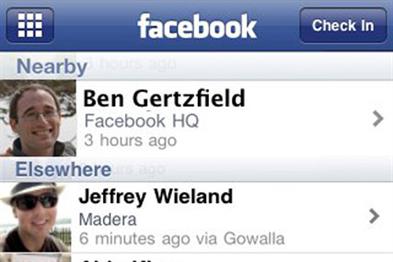Curated By ZenithOptimedia, The ROI Agency
Find out more at http://puma-pulse.blogspot.com
The Reebok Taikan viral video campaign, created by Saatchi & Saatchi Fallon Tokyo, became the second most viewed on YouTube in Japan in 2010.
Background:
Taikan is Reebok's performance enhancing clothing and footwear line that helps align the body for better balance which can lead to better breathing, flexibility and sports performance. The challenge for Reebok was how to gain awareness and exposure of the product line with limited budget and retail space allotment compared to competitors.
Taikan is Reebok's performance enhancing clothing and footwear line that helps align the body for better balance which can lead to better breathing, flexibility and sports performance. The challenge for Reebok was how to gain awareness and exposure of the product line with limited budget and retail space allotment compared to competitors.
Aim:
The campaign was designed to raise awareness of Reebok's Taikan product line. KPI's included reaching 100,000 views within six weeks, a doubling of visits to the brand website and some free exposure in non-paid media.
The campaign was designed to raise awareness of Reebok's Taikan product line. KPI's included reaching 100,000 views within six weeks, a doubling of visits to the brand website and some free exposure in non-paid media.
Execution:
"A successful viral campaign involves much more than a great piece of film placed on-line. The agency carefully crafted a plan that was supported by some integrated activities that would help detonate maximum exposure of the video in a short period of time," said Zach Taub, brand director, Reebok Japan.
"A successful viral campaign involves much more than a great piece of film placed on-line. The agency carefully crafted a plan that was supported by some integrated activities that would help detonate maximum exposure of the video in a short period of time," said Zach Taub, brand director, Reebok Japan.
The central element to the campaign was a video designed to go viral, which was in fact a parody of a very well-known exercise show in Japan. The videowas released 1 April and was supported with limited but well-aimed integrated public relations seeding and guerilla tactics targeting potential users.
"The key to success was two-fold", Phil Rubel, CEO of Saatchi & Saatchi Fallon, explained, "First, the campaign taps into a tremendous cultural icon. The daily calisthenics show had been on TV for decades and almost everyone growing up in Japan knows about it and has probably exercised to it at some point."
He added that the campaign was based on an insight that everyone can relate too – which is people's penchant for purchasing expensive new equipment to improve their game, rather than improve their own physical core. "Of course, the surprising twist that people saw when they viewed the video which our creative team came up with made it absolutely irresistible not to pass on to friends," said Rubel.
Results:
"The Reebok viral campaign for the Taikan line of performance wear is an excellent example of how to do a viral campaign right. The KPI results speak for themselves ," said Taub.
"The Reebok viral campaign for the Taikan line of performance wear is an excellent example of how to do a viral campaign right. The KPI results speak for themselves ," said Taub.
"We had hoped to get 100,000 views in six weeks – we got 134,000 views the first day and over 1.6 million views by the six week mark." explained Rubel "In addition to the YouTube views, we also achieved over 550 million yen's worth of free TV exposure as almost all the key stations in Japan featured the video, the products, the performers and sometimes even Reebok representatives on their shows. And visits to the product website increased by almost 400 per cent."
The icing on the cake for this campaign was the recent announcement byYouTube Rewind that the viral video was the second-most viewed video on YouTube in Japan in 2010.
"We were only beat out by a famous local celebrity model's very steamy fashion shoot film called Glamorous. So if we're going to come in second to somebody, it might as well be to something like that," said Taub.
Currently the Taikan video is closing in on 2 million views.




